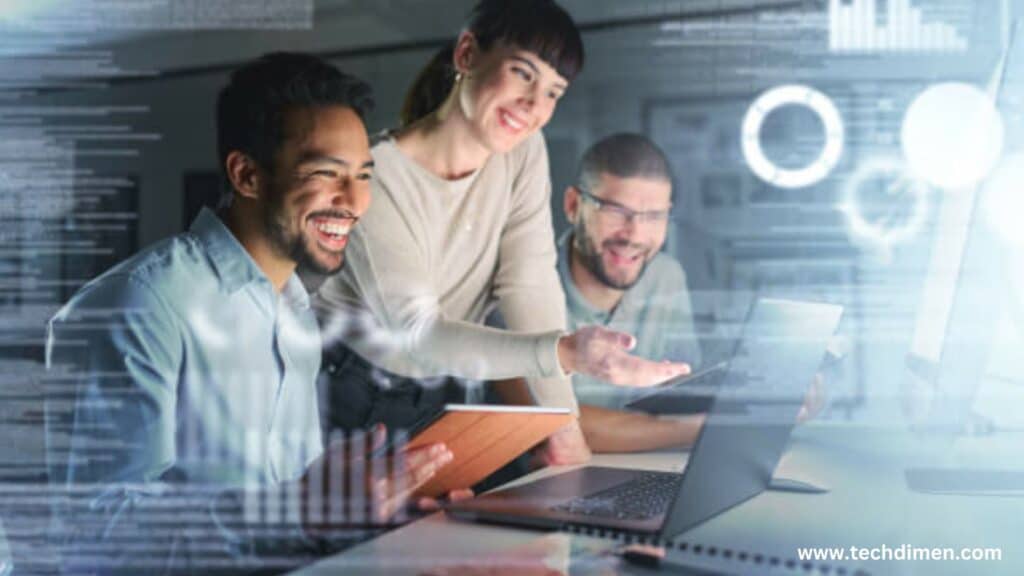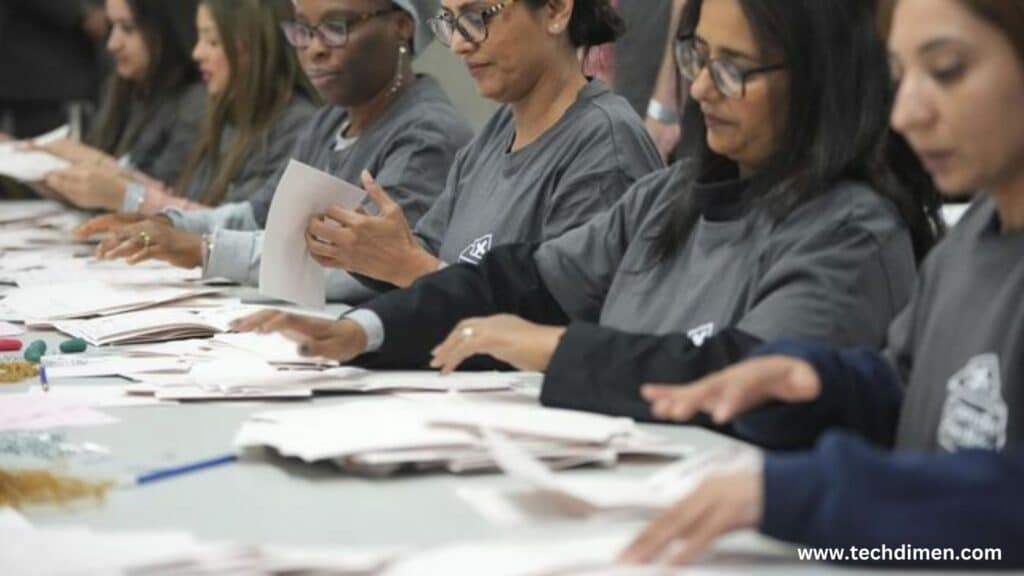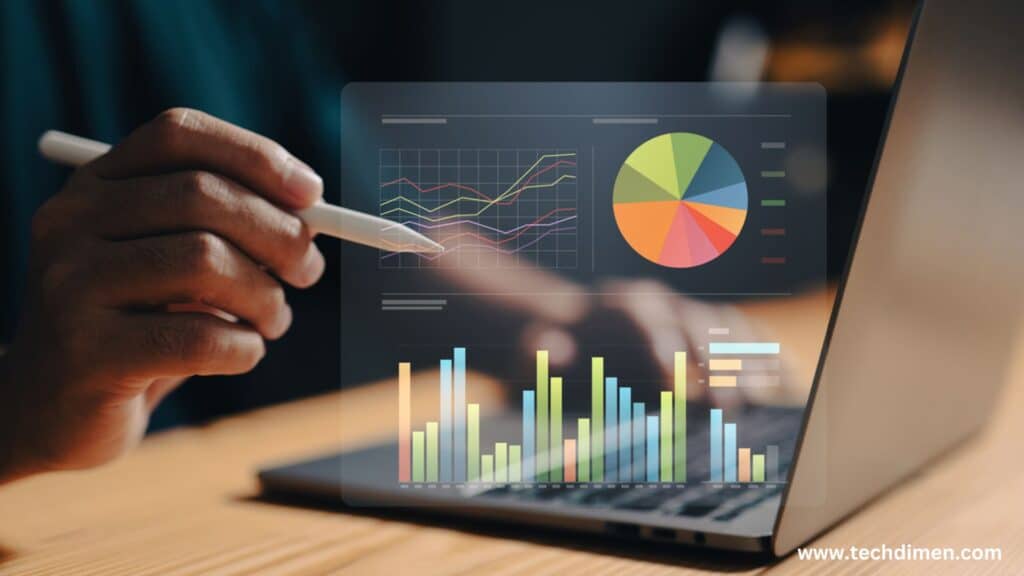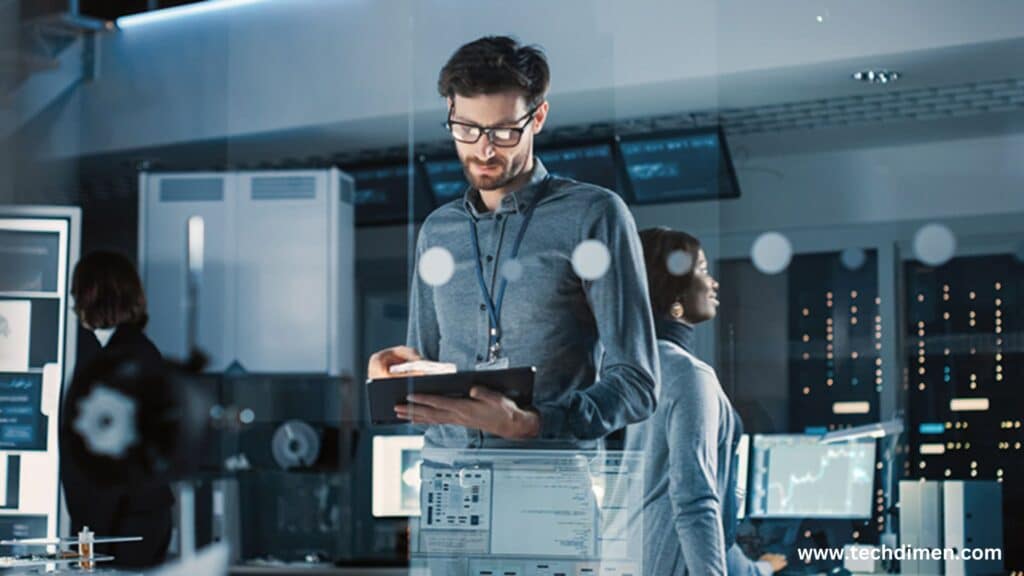As the demand for data-driven decisions increases, people counting technology has emerged as a vital tool for optimizing space usage, improving safety protocols, and enhancing customer experience. From bustling retail stores to quiet university libraries, understanding how many people are in a space and how they move through it can shape smarter, more efficient environments.
What Is People Counting Technology?
People counting technology refers to systems that monitor and analyze the number of individuals entering, exiting, or occupying a specific area in real-time. These systems can take many forms, from infrared people counters and thermal sensors to advanced AI people counting cameras. Whether you’re running a shopping mall, managing a corporate facility, or overseeing airport logistics, knowing how many people are present is no longer just nice to have it’s essential.
The core value lies in transforming raw foot traffic data into actionable insights. With in this time people counting, decision-makers can allocate staff more effectively, ensure building safety, monitor occupancy limits, and enhance customer flow and satisfaction. This data is typically anonymized, ensuring privacy while still delivering powerful analytics.
Why People Counting Technology Is More Important Than Ever
In today’s hyper-connected world, data is king. Understanding how people interact with physical spaces allows businesses and institutions to make smart decisions quickly.
One major advantage is operational efficiency. Businesses can adjust opening hours, shift scheduling, and even HVAC systems based on actual usage patterns rather than assumptions. An occupancy monitoring system can also help reduce unnecessary overhead by identifying underused areas.
Beyond operations, this technology elevates the customer experience. By analyzing peak traffic hours and dwell times, store managers can adjust layouts, streamline checkout lines, and improve service delivery. These systems are especially critical in high-volume settings like airports, transit hubs, and hospitals where every second counts.
Safety and compliance also play a significant role. During health crises like COVID-19, ensuring social distancing and occupancy limits became non-negotiable. Systems using AI occupancy detection and zone occupancy analytics helped enforce these rules without human intervention.
The final pillar of importance lies in the intelligence it delivers. With foot traffic analytics, organizations can forecast trends, measure marketing effectiveness, and justify costs such as rent or staffing.
How People Counting Technology Works

At its core, people counting systems rely on various sensor technologies to detect and record human presence. Each method has its own strengths, limitations, and ideal use cases.
Infrared beam sensors are among the oldest technologies in this space. These counters use a horizontal infrared beam across a doorway. When someone passes through, the beam is broken, registering an entry or exit. While cost-effective, they struggle with directionality and crowd density.
Overhead thermal sensors offer a more advanced solution. Mounted on ceilings, they detect heat signatures from bodies passing below. This enables more accurate counting even in low-light conditions or when individuals are moving quickly. Thermal people counters are also GDPR-friendly since they don’t capture identifiable information.
AI-powered video analytics represent the cutting edge. Using smart cameras and machine learning algorithms, these systems can identify, track, and count individuals with high accuracy. People counting cameras offer additional features like anonymous face detection, behavior analysis, and demographic segmentation.
Wireless methods, such as Wi-Fi and Bluetooth tracking, detect the signals emitted by smartphones or wearables. While not 100% accurate for counting unique individuals due to signal variability, they are excellent for measuring dwell time and movement patterns.
Some systems combine multiple technologies to increase accuracy and reliability, using sensor-based occupancy tracking, stereo vision sensors, or LiDAR for people counting.
Types of People Counting Systems
There are several kinds of people counters, each tailored for specific environments.
Unidirectional systems simply count entries or exits but not both. These are most useful in small retail setups where only ingress data is required. Bidirectional counters can distinguish between people entering and exiting, offering a more complete picture of occupancy.
Face detection systems, while maintaining privacy, can provide valuable metadata such as age group, gender, or emotional response. Although controversial in some markets due to privacy laws, anonymous face detection has enabled better demographic segmentation in regions with relaxed data regulations.
Heat maps and dwell time analysis tools provide insights into where people spend time in a store or facility. This helps managers understand high-traffic areas and improve space layout for maximum engagement or utility.
To compare different systems, consider factors like accuracy, cost, privacy compliance, and integration capabilities. For instance, thermal counters are mid-range in price but very accurate and privacy-safe. Video analytics systems offer the highest granularity but may require GDPR precautions.
Where People Counters Are Used

People counting isn’t limited to retail. It’s a cross-industry necessity in today’s smart environments.
In retail stores, it helps measure conversion rates, optimize layout, and fine-tune marketing efforts. A retail traffic counter integrated with POS systems reveals how foot traffic aligns with actual purchases.
Smart buildings use people tracking technology to manage HVAC systems, lighting, and even elevator use. Smart facility management becomes more sustainable and cost-effective when powered by occupancy data.
Airports and public transport hubs deploy crowd monitoring systems and entrance counter sensors to manage crowd flow, improve navigation, and enhance security.
Museums and event venues leverage visitor analytics tools to manage peak traffic times and offer better visitor experiences. Knowing how long people spend in certain exhibits allows curators to plan more engaging layouts.
Healthcare facilities rely on real-time occupancy analytics to ensure efficient room use, control infections, and manage staff allocation. Even schools and campuses benefit from campus foot traffic monitoring to improve scheduling and student flow.
How to Choose the Right People Counting System
Selecting the right people counter device depends on several factors.
First, consider accuracy requirements. High-traffic environments with multiple entry points need more precise solutions like Time-of-Flight sensors or AI cameras. For smaller businesses, an infrared people counter may suffice.
Privacy compliance is another key factor. Ensure your system adheres to local data protection laws like GDPR. Privacy-safe people counters that avoid storing identifiable data are ideal for sensitive environments.
Budget and scalability matter, too. Some solutions require significant upfront investment but offer better ROI over time. Ensure the system can grow with your business, both in terms of hardware and software.
Integration capabilities are essential if you want to sync the counter with existing business intelligence tools, POS systems, or HVAC controls. The most effective systems work seamlessly with other smart building technologies.
Benefits of People Counting Analytics

The true power of automated people counting lies in what you do with the data.
One of the biggest benefits is cost reduction. By knowing when and where people gather, you can reduce energy costs, staffing expenses, and even optimize leasing strategies.
Conversion rate optimization becomes much easier when foot traffic data is linked to sales data. If you know how many people entered versus how many purchased, marketing and sales strategies can be tailored for better performance.
Staffing decisions become data driven. Predictive analytics help managers anticipate busy periods and allocate resources accordingly, improving both efficiency and employee satisfaction.
Foot traffic data can also be used to justify rent negotiations. A retailer in a high-traffic mall can use analytics to validate their lease value with clear, objective data.
Trends in People Counting Technology
The field continues to evolve, driven by innovations in AI, IoT, and predictive analytics.
AI and edge computing are reshaping what’s possible. Instead of sending all data to a centralized server, edge devices can process data locally, reducing latency and bandwidth needs.
Integration with IoT and smart cameras enhances the versatility of people counters. These connected systems can share data across platforms, offering a complete picture of how spaces are used.
Machine learning allows for predictive occupancy trends. By analyzing historical data, businesses can forecast future usage patterns with high accuracy, aiding in long term planning.
Privacy enhancements are also becoming standard. Modern systems focus on anonymous people tracking, ensuring compliance while still delivering granular insights.
People Counting Tech at a Glance
| Tech | How It Works | Pros | Cons | Best Use |
|---|---|---|---|---|
| Infrared Beam | Breaks in light beam | Cheap, simple | No direction | Small shops |
| Thermal Sensor | Detects body heat | Works in dark | Costly in crowds | Museums, libraries |
| 3D Camera | Depth tracking | Very accurate | Needs light | Malls, airports |
| ToF Sensor | Measures light return | Accurate in dark | Reflective issues | Offices, lobbies |
| 2D Video | AI on video feed | Low-cost, flexible | Light-dependent | Retail, events |
| Wi-Fi/Bluetooth | Tracks nearby devices | No sight needed | Can overcount | Venues, campuses |
| LiDAR | Laser-based mapping | Ultra-accurate | Expensive | Smart cities |
| AI Overhead Cam | AI counts from above | High precision | Privacy concerns | Airports, stadiums |
| Pressure Mat | Senses foot pressure | Simple setup | No direction | Elevators, entries |
FAQs
What Is People Counting Technology?
People counting technology refers to systems that measure how many individuals enter, exit, or move through a space. It’s commonly used in places like retail stores, airports, libraries, office buildings, and public venues. The goal is to capture real-time data that helps organizations improve operations, optimize resources, and make data-driven decisions about foot traffic.
How Does It Work?
These systems rely on various types of sensors to detect movement. Some use infrared beams to register when someone passes by. Others use video cameras with artificial intelligence to visually count people. More advanced options might use thermal imaging or pick up signals from mobile devices through Wi-Fi or Bluetooth. The method depends on the environment and the level of accuracy needed. The system processes that input and translates it into usable data, often instantly.
How Accurate Is It?
Today’s people counting technology is incredibly accurate. Systems that incorporate AI-based video analytics can achieve over 95 percent accuracy. Of course, factors like lighting conditions, sensor placement, and crowd density can affect performance. But with proper setup, the results are highly reliable and consistent.
Where Is People Counting Used?
You’ll find this technology in a wide range of settings. Retail environments use it to monitor customer flow and analyze peak shopping hours. Airports and transit stations rely on it to manage passenger traffic efficiently. Museums, stadiums, and event venues use it to monitor capacity in real time. Even hospitals and corporate offices use these systems to improve space utilization and enhance safety protocols. The technology is incredibly versatile.
Why Do Businesses Use People Counters?
Because data is powerful. When a business knows how many people are entering its space, when they arrive, and how long they stay, it can make smarter decisions. People counters help optimize staff schedules, improve store layouts, and reduce costs on things like heating and lighting. They also offer valuable insights into marketing performance, like whether a specific promotion or campaign actually increased foot traffic.
Does It Collect Personal Data?
No, and that’s one of its biggest strengths. People counting systems are designed to protect privacy. They do not collect names, store faces, or gather any personally identifiable information. Even systems that use video processing often do so in real time and don’t save the footage. Everything is anonymized, ensuring compliance with privacy regulations like GDPR or CCPA.
Can It Distinguish Between Adults and Children?
Some systems can make that distinction. Using height detection, heat signatures, or behavioral patterns recognized by AI, certain technologies are able to identify whether a person is an adult or a child. This can be especially useful in environments like amusement parks or educational facilities where demographics matter.
How Is the Data Stored and Accessed?
Typically, people counting systems use cloud-based platforms to store and analyze data. Users can log into a dashboard to view real-time counts, generate historical reports, or identify patterns over time. Some systems also offer mobile access or integrate seamlessly with customer relationship management tools, point-of-sale systems, or building management platforms. Everything is designed to be user-friendly and easy to access.
Can It Work Outdoors?
Yes, there are models built specifically for outdoor use. These are usually weather-resistant and designed to handle harsh environments. Technologies like thermal imaging and radar are often used outdoors because they perform well in low-light or rainy conditions. Whether it’s monitoring a stadium entrance or counting visitors at a park, outdoor-ready systems are robust and reliable.
What’s the Cost?
Pricing varies depending on the technology, coverage area, and features. A simple setup might cost around a few hundred dollars, while larger or more advanced systems can reach several thousand. Enterprise solutions with AI-based video analytics, cloud storage, and integration features tend to be on the higher end of the price range. However, the investment often pays for itself in improved efficiency and better data-driven decisions.
Is Installation Complicated?
It depends on the system. Some are plug-and-play and can be installed with minimal technical knowledge. Others, especially those involving wired sensors or complex building layouts, may require professional installation. The vendor typically provides guidelines, and many offer setup support to ensure everything works properly from the start.
Can It Help During Emergencies?
Yes, and it’s one of the more valuable features of these systems. During emergencies, having in this time occupancy data can help manage crowd control, trigger alerts when capacity limits are reached, or guide people to safer exits. Event venues, transit hubs, and large office buildings all benefit from this level of situational awareness.
People Counters vs. Footfall Counters What’s the Difference?
The terms are often used interchangeably, but there’s a subtle difference. Footfall counters generally refer to systems used in retail or public areas to track the number of people passing by or entering a space. People counting technology is a broader term that includes solutions for monitoring occupancy, movement patterns, and even space utilization across a wide range of industries not just retail.
Can It Integrate with Other Systems?
Absolutely. Most modern systems are built to work with other technologies. Whether it’s linking up with security systems, syncing with HVAC and lighting controls, or feeding data into marketing platforms, integration is a key benefit. APIs and built-in connectors make it easier to turn foot traffic data into meaningful business intelligence.
Let me know if you’d like a follow-up section comparing sensor types, or a visual diagram explaining how a typical people counting system works.
Final Thoughts on People Counting
People counting technology is no longer a niche tool it’s foundational for data driven decision-making in physical spaces. Whether you’re trying to improve customer experience, cut operational costs, or simply understand how a space is used, the right people counting system delivers the clarity you need. The best solutions don’t just count they provide this time visitor insights, enable smarter strategies, and unlock new efficiencies across industries.
The future of space management will be built on data, and people counting sensors are a key pillar in that foundation.

Jhon AJS is a tech enthusiast and author at Tech Dimen, where he explores the latest trends in technology and TV dimensions. With a passion for simplifying complex topics, Jhon aims to make tech accessible and engaging for readers of all levels.







